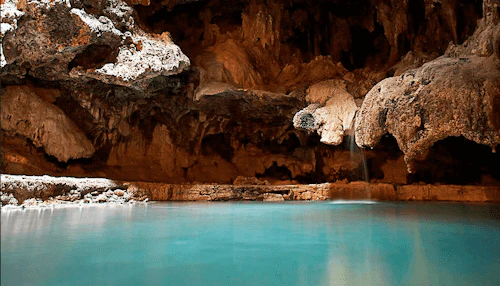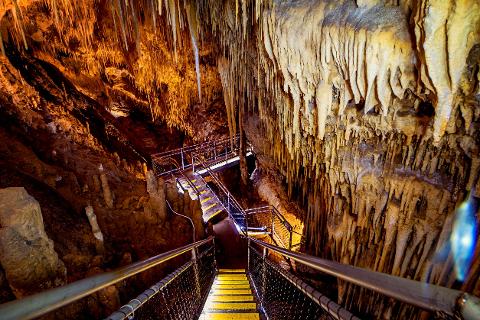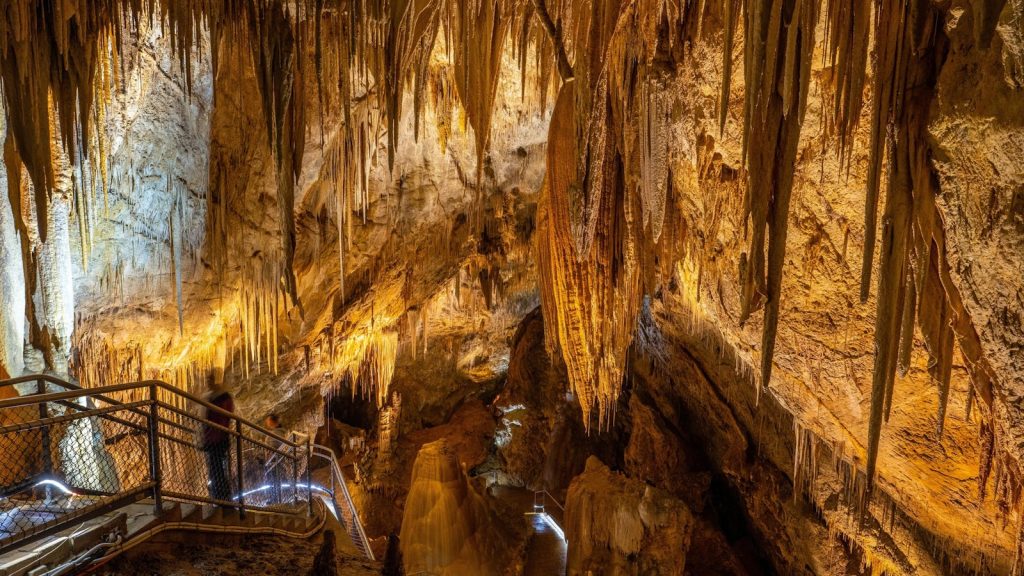If you’re visiting Banff, Alberta, there’s one destination that offers a rare mix of history, nature, and breathtaking scenery: the Cave and Basin National Historic Site. This remarkable place marks the birthplace of Canada’s national parks system and provides a window into the past, where human discovery, Indigenous heritage, and natural wonders intersect. When you visit Cave and Basin National Historic Site, you’ll explore natural thermal springs, preserved historic buildings, and a fragile ecosystem that’s home to rare species found nowhere else on earth. This guide will help you plan your visit, with detailed insights into what makes this site a must-see on your Banff itinerary.
The History Behind Cave and Basin National Historic Site

The Cave and Basin National Historic Site is the cradle of Canada’s national parks. It all started in 1883 when three Canadian Pacific Railway workers — William McCardell, Tom McCardell, and Frank McCabe — discovered steaming hot springs inside a cave on the slopes of Sulphur Mountain. They saw an opportunity and tried to commercialize the site, but their actions sparked a national debate. The Canadian government stepped in, declaring the area protected as the Banff Hot Springs Reserve in 1885. This decision marked the creation of Canada’s first national park — now known as Banff National Park — and inspired the growth of the country’s vast parks network.
However, the story doesn’t start with these railway workers. Indigenous peoples, including the Stoney Nakoda, Ktunaxa, and Blackfoot Nations, had long known about the warm mineral springs. They considered these waters sacred, using them for spiritual purposes and healing. Today, Cave and Basin honors this deeper history through exhibits and educational programs that recognize the significance of Indigenous stewardship.
Visitors to the site can explore original structures, view historic bathing pools, and learn how this small corner of Banff became the foundation for Canada’s proud tradition of conservation.
Explore the Cave and Thermal Spring


The cave at Cave and Basin is a magical place, one that continues to inspire awe. As you follow the boardwalk into the dim, naturally formed chamber, the smell of sulphur greets you — a reminder that these thermal waters still bubble up from deep within the earth. Inside, you’ll see a shimmering turquoise pool where warm mineral water collects. Sunlight filters through the entrance, casting reflections on the wet rock walls, creating a serene and timeless atmosphere.
While you can no longer bathe in these waters (bathing was stopped in the 1990s to protect the fragile ecosystem), standing in the cave offers a chance to reflect on its significance. This is the very spot where Banff’s story as a national park began — where nature’s power inspired protection instead of exploitation.
Outside the cave, you can follow paths to other thermal features. The outdoor pools, fed by the same spring water, are home to the endangered Banff Springs snail, a species that exists nowhere else on the planet. Interpretive signs explain how these creatures depend on the unique habitat the thermal springs provide. The entire area serves as a living reminder of the need to balance visitor enjoyment with environmental responsibility.
Visit the Historic Bathing Pavilion and Interpretive Centre
The 1914 Bathing Pavilion at Cave and Basin offers a glimpse into Banff’s early tourism boom. When you enter this elegant, historic structure, you’re stepping into a world where travelers came from far and wide to experience the “healing” powers of the mineral waters. The architecture reflects early 20th-century design, with arched windows, decorative woodwork, and spacious viewing areas overlooking the former swimming pools.
Inside, you’ll find a thoughtfully curated interpretive center that tells the site’s full story. Exhibits cover:
- The geological forces that created Banff’s hot springs
- The early years of Canada’s national parks system
- Indigenous connections to the land and springs
- The social history of hot springs tourism, including vintage swimwear, postcards, and marketing materials
Multimedia displays bring these stories to life through historic photographs, first-person accounts, and interactive touchscreens. The interpretive centre also features short films on the birth of Canada’s national parks, the fight to save endangered species like the Banff Springs snail, and the importance of preserving cultural heritage.
This space is more than just informative — it connects the past to the present, helping visitors understand why protecting places like Cave and Basin is as important today as it was in 1885.
Walk the Marsh Boardwalks and Nature Trails


Beyond the cave and pavilion, the marsh boardwalks offer a peaceful escape into nature. These elevated wooden paths wind through the warm water outflows, marshes, and wetlands that surround the historic site. As you stroll, you’ll pass bubbling pools, open wetlands, and areas rich with native plants like cattails and sedges. These habitats provide refuge for an array of wildlife — from songbirds and amphibians to dragonflies and the tiny Banff Springs snail.
Interpretive signs along the boardwalk explain how the thermal waters shape this rare ecosystem. You’ll learn about the challenges these species face, the science behind geothermal activity, and the ongoing conservation work that protects the site’s biodiversity. The boardwalks also offer excellent views of Sulphur Mountain and the surrounding peaks — a perfect backdrop for photos.
For those looking for a longer walk, connect to the Marsh Loop Trail, a gentle 2.5 km path that encircles the wetlands. This is a great spot for birdwatching, especially in spring and summer when the marshes come alive with nesting activity. The trails are easy and family-friendly, making them suitable for all ages.
Enjoy Interactive Exhibits and Educational Programs
One of the standout features when you visit Cave and Basin National Historic Site is the educational programming offered by Parks Canada. The interpretive center hosts interactive exhibits designed to engage both adults and children. Through touchscreens, models, and hands-on displays, visitors can explore the geology of the Rocky Mountains, the science behind hot springs, and the cultural history of the site.
In addition to the permanent exhibits, Parks Canada regularly offers ranger-led talks, workshops, and demonstrations. These programs might cover topics such as:
- How geothermal springs are formed
- The story of the Banff Springs snail and how it’s monitored
- The impact of tourism on sensitive ecosystems
During special events, visitors may have the chance to join lantern-lit evening tours, storytelling sessions featuring Indigenous perspectives, or arts and music performances that celebrate the cultural heritage of the area.
This educational focus makes Cave and Basin a fantastic stop for families, school groups, or anyone curious about the natural world and Canada’s conservation history.
Practical Information for Visitors
- Location: Cave and Basin National Historic Site is located 1.5 km west of downtown Banff on Cave Avenue. It’s easy to reach by car, bike, or on foot.
- Hours: The site is open year-round. Typical hours are from 11:00 AM to 5:00 PM, but it’s best to check online before your visit as times vary by season and holidays.
- Fees: Admission is affordable, with discounts for youth, seniors, and families. Visitors with a Parks Canada Discovery Pass enjoy free entry.
- Parking: Ample parking is available on-site, along with bike racks.
- Transit: During peak season, Roam Public Transit services the site — a convenient and eco-friendly option.
Final Thoughts
Choosing to visit Cave and Basin National Historic Site means experiencing more than just a pretty place. It’s an opportunity to connect with the roots of Canada’s national parks, appreciate the work of those who fought for preservation, and witness nature’s resilience in action. From the haunting beauty of the cave to the lively wetlands, the site offers a blend of history, culture, and ecology you won’t find anywhere else.
It’s a destination that appeals to all kinds of travelers — history enthusiasts, nature lovers, photographers, and families. The next time you’re in Banff, set aside time for this special site. You’ll leave with not only stunning photos but also a deeper understanding of why places like Cave and Basin are worth protecting for generations to come.

